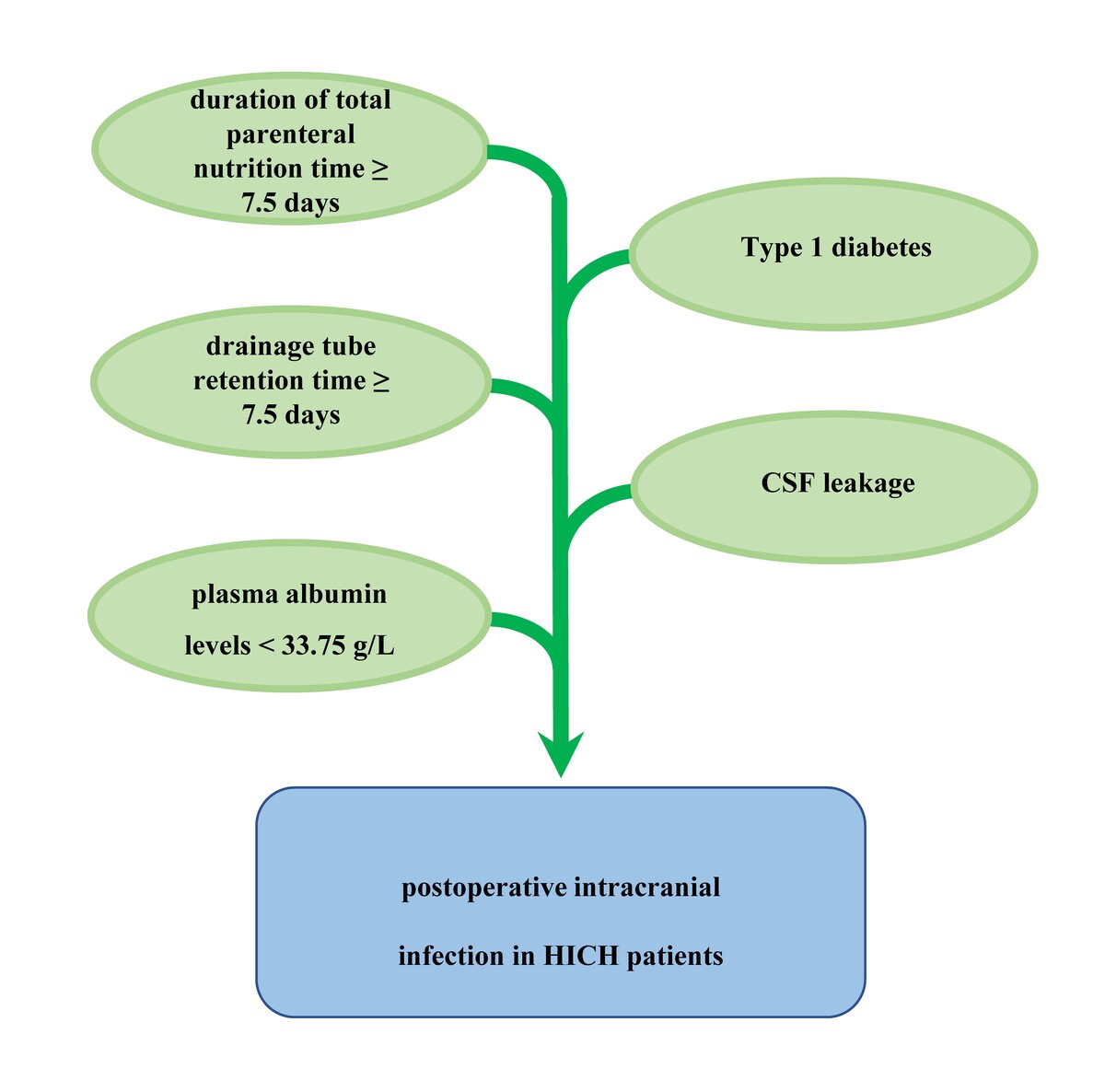Current issue
Archive
Manuscripts accepted
About the Journal
Editorial office
Editorial board
Section Editors
Abstracting and indexing
Subscription
Contact
Ethical standards and procedures
Most read articles
Instructions for authors
Article Processing Charge (APC)
Regulations of paying article processing charge (APC)
NEUROSURGERY / RESEARCH PAPER
Risk factors of postoperative intracranial infection in individuals suffering from hypertensive intracerebral hemorrhage
1
Department of Neurosurgery, The Second Affiliated Hospital, Jiangxi Medical College, Nanchang University, China
2
Department of Neurosurgery, Renmin Hospital of Wuhan University, China
3
Department of Neurosurgery, Guangdong 999 Brain Hospital, China
Submission date: 2024-11-25
Final revision date: 2025-02-19
Acceptance date: 2025-03-03
Online publication date: 2025-04-27
Corresponding author
Guo-Hua Mao
Department of Neurosurgery, The Second Affiliated Hospital, Jiangxi Medical College, Nanchang University, 330008, Nanchang, China
Department of Neurosurgery, The Second Affiliated Hospital, Jiangxi Medical College, Nanchang University, 330008, Nanchang, China
KEYWORDS
hypertensive intracerebral hemorrhageintracranial infectionrisk factorstotal parenteral nutritiontype 1 diabetes
TOPICS
ABSTRACT
Introduction:
It can be fatal for individuals with hypertensive intracerebral hemorrhage (HICH) to have a postoperative intracranial infection. It's yet unknown what risk factors led to this emergence. Therefore, the clinical variables for intracranial infection following HICH surgery were investigated.
Material and methods:
3253 HICH patients who underwent hematoma removal surgery were enrolled. For every patient, clinical traits were obtained. To determine the variables that were independently linked to intracranial infection following HICH surgery, univariate/multivariate logistic regression analyses were used. The analysis of the receiver operating characteristic (ROC) curve was carried out to ascertain the threshold values for continuous parameters that predict postoperative intracranial infection in HICH patients.
Results:
300 patients suffered from intracranial infection. Multivariate logistic regression indicated that, following HICH surgery, drainage tube retention time, duration of total parenteral nutrition (TPN) time, cerebrospinal fluid (CSF) leakage, type 1 diabetes, and plasma albumin levels were the separate susceptibility variables for cerebral infection. The ROC curve displayed that the area under the curve for drainage tube retention time (cutoff value, 7.5 days), plasma albumin levels (cutoff value, 33.75 g/L), and duration of TPN time (cutoff value, 7.5 days) were 0.756, 0.977, and 0.895, respectively.
Conclusions:
Duration of TPN time ≥ 7.5 days, type 1 diabetes, CSF leakage, drainage tube retention time ≥ 7.5 days, and plasma albumin levels < 33.75 g/L were independent risk factors for postoperative intracranial infection in HICH patients. More attention should be provided to the contributors to minimize the frequency of this complication.
It can be fatal for individuals with hypertensive intracerebral hemorrhage (HICH) to have a postoperative intracranial infection. It's yet unknown what risk factors led to this emergence. Therefore, the clinical variables for intracranial infection following HICH surgery were investigated.
Material and methods:
3253 HICH patients who underwent hematoma removal surgery were enrolled. For every patient, clinical traits were obtained. To determine the variables that were independently linked to intracranial infection following HICH surgery, univariate/multivariate logistic regression analyses were used. The analysis of the receiver operating characteristic (ROC) curve was carried out to ascertain the threshold values for continuous parameters that predict postoperative intracranial infection in HICH patients.
Results:
300 patients suffered from intracranial infection. Multivariate logistic regression indicated that, following HICH surgery, drainage tube retention time, duration of total parenteral nutrition (TPN) time, cerebrospinal fluid (CSF) leakage, type 1 diabetes, and plasma albumin levels were the separate susceptibility variables for cerebral infection. The ROC curve displayed that the area under the curve for drainage tube retention time (cutoff value, 7.5 days), plasma albumin levels (cutoff value, 33.75 g/L), and duration of TPN time (cutoff value, 7.5 days) were 0.756, 0.977, and 0.895, respectively.
Conclusions:
Duration of TPN time ≥ 7.5 days, type 1 diabetes, CSF leakage, drainage tube retention time ≥ 7.5 days, and plasma albumin levels < 33.75 g/L were independent risk factors for postoperative intracranial infection in HICH patients. More attention should be provided to the contributors to minimize the frequency of this complication.
Share
RELATED ARTICLE
We process personal data collected when visiting the website. The function of obtaining information about users and their behavior is carried out by voluntarily entered information in forms and saving cookies in end devices. Data, including cookies, are used to provide services, improve the user experience and to analyze the traffic in accordance with the Privacy policy. Data are also collected and processed by Google Analytics tool (more).
You can change cookies settings in your browser. Restricted use of cookies in the browser configuration may affect some functionalities of the website.
You can change cookies settings in your browser. Restricted use of cookies in the browser configuration may affect some functionalities of the website.



